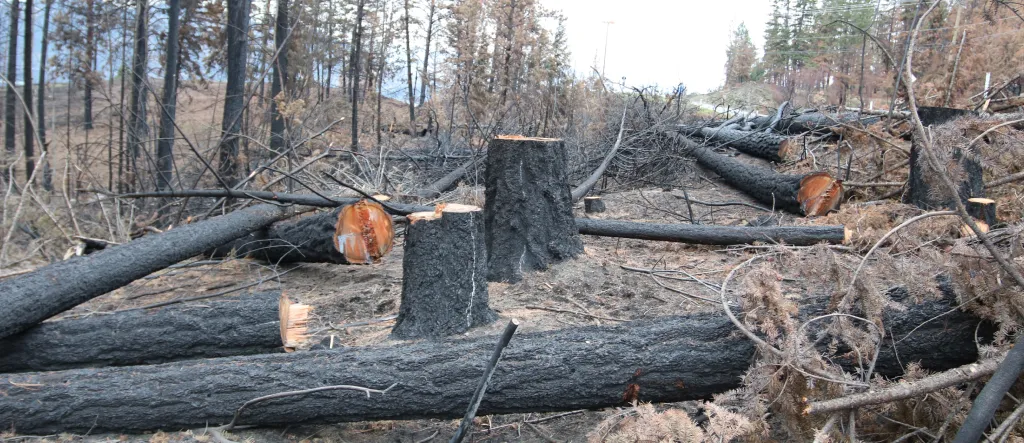Timber Salvage (Post Wildfire)
In the aftermath of a wildfire, the landscape is often perceived as a loss, with charred trees and a seemingly lifeless environment. However, within this setting, there can lie a significant opportunity in salvaging timber from these burned trees. Recovering this timber not only aids in resource maximization but also plays a crucial role in environmental recovery and sustainability.
How to Salvage the Timber

Identifying the Usable Timber
The first step is to assess the condition of the burned trees, as not all are salvageable. We rely on field assessments to determine which trees still hold valuable timber despite being burned.
Logging and Transport
Once the usable trees are identified, the next phase is getting them out of there. This process is conducted with precision and care to ensure safety and efficiency. Our team is equipped with state-of-the-art machinery that aids in the careful removal of these trees.
In transporting salvaged timber, the method we choose hinges on the quantity and condition of the wood. Given the unique challenges presented by charred and fragile timber, we sometimes need specialized vehicles to safely move it. Depending on the situation, we either handle the hauling ourselves or, in certain cases, collaborate with specialists in the field to ensure the timber reaches its destination efficiently and securely.
Environmental and Economic Considerations
Minimizing Impact
Rock Hard Excavating is dedicated to protecting the environment in all our operations. We focus on reducing our impact on the soil and nearby plants by thoughtfully planning our logging paths and using methods that limit disturbance to the ground.
Promoting Regrowth
Removing burned timber aids in the regrowth process as it clears the area, allowing sunlight to reach the ground, which is essential for the germination of new plants and trees. This step is vital in the ecological recovery of the area.
Resource Maximization
Using timber from areas affected by wildfires is good for both the environment and the economy. This approach helps make the most out of resources that might otherwise go to waste. After processing, this timber can serve many uses, such as in building and manufacturing.
Conclusion
Salvaging timber after wildfires is vital for several reasons, including making the most of available resources, aiding in ecological healing, and boosting local economies. Rock Hard Excavating’s methods, which combine respect for the environment with professional know-how, guarantee that this task is done effectively, safely, and with sustainability in mind. Recognizing the potential in what appears to be lost, we transform post-wildfire areas into chances for rejuvenation and progress.
By understanding the value in what seems lost, we can turn a post-wildfire landscape into an opportunity for renewal and growth.

